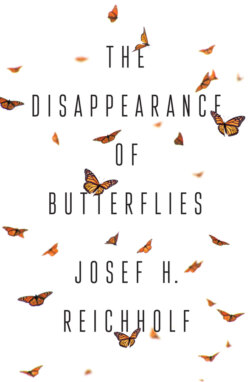Читать книгу The Disappearance of Butterflies - Josef H. Reichholf - Страница 16
How the caterpillar breathes under water
ОглавлениеThe addition of wax to the diet allows the caterpillar to move from the wettable to the unwettable (or hydrophilic to hydrophobic) next stage. Wax is secreted across the whole outer surface of the body of the caterpillar from tiny cone-shaped structures, the sides of which are deeply grooved and become filled with wax. That is why the caterpillars have such a silky sheen during their unwettable stage. Only the head and its connection to the body are not covered with such a wax layer. This is very important because if the head also repelled water, the surface tension would constantly push it away from the wet leaf and the caterpillar would barely be able to eat. The change from skin-breathing to air-breathing through the tubular system typical of insects, the spiracles, therefore characterizes the life of the caterpillar of this aquatic moth. It gets really exciting when the caterpillar is fully grown and ready for pupation. It does not crawl with its leaf case to land, although this might be the most practical solution from a human perspective, but instead labours downwards, along the stem of the water plant, struggling to overcome the buoyancy of the air-filled case. When it has reached a water depth of 10–30 centimetres, it bites a few small holes into the stem of the pondweed or water-lily plant, on the leaves of which it has been feeding, attaches the case by spinning a few fine threads, and transforms itself into a pupa. There, inside the air bubble, the pupa frees itself from the final caterpillar skin by light movements of its abdomen.
Then it rests until the internal transformation into a butterfly has been completed. Since this metamorphosis, which appears so quiet to the outside world, requires a great deal of energy, the pupa must breathe. This would lead to a shortage of air in the pupa case if the caterpillar had not tapped into the air tubes of the water plant. These tubes supply the roots of the plant with the oxygen they need, and the pupa obtains oxygen from them. Since carbon dioxide produced in the transformation process dissolves in the water that surrounds the leaf case, a lower pressure is created. This in turn causes air to be sucked down along the plant stem. In contrast to the caterpillar, which floats on the water surface in its air-filled vessel and can replenish its air directly, the pupa is dependent on the plant for its air supply. It is even possible that the leaves that remain green in the water carry out photosynthesis for longer, just to provide oxygen to the air bubble of the pupa. The highly complex problem of how an air-based animal can breathe under water is therefore solved in different ways: an adaptive achievement that one can only wonder at.
